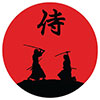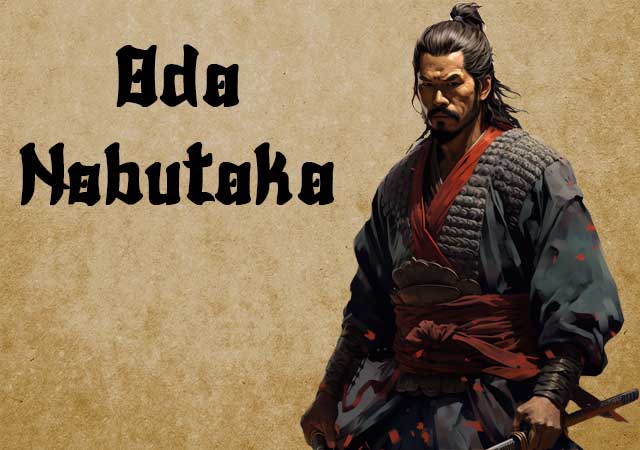
Oda Nobutaka (1558–1583) was a samurai of the Oda clan, also known as Kanbe Nobutaka after being adopted as the head of the Kanbe clan, which governed the central region of Ise Province. He was the third son of Oda Nobunaga, born to a concubine named Sakashi. Nobutaka was referred to as "San Shichi," possibly because he was born on the seventh day of the third month in the Japanese lunar calendar. However, there is a theory suggesting he was born twenty days earlier than his elder brother, Oda Nobukatsu, but due to delays in reporting and the low status of his mother’s family, he was acknowledged as Nobunaga’s third son.
In 1568, after Nobunaga secured control of Ise Province, Nobutaka became the head of the Kanbe clan, ruling from Kanbe Castle near present-day Suzuka, Mie. In contrast, his brother Nobukatsu was adopted into the powerful Kitabatake clan and governed a much larger territory in southern Ise. Missionaries of the time noted that Nobutaka had a better character than Nobukatsu, despite holding a smaller domain.
In 1577, Nobutaka led a successful siege of Ota Castle (near modern Wakayama Castle) and suppressed the Jōdo Shinshū Buddhist uprising (Saika Ikki) in Kii Province. By 1582, Nobutaka was tasked with leading an army against Shikoku, commanding notable retainers such as Niwa Nagahide and Tsuda Nobuzumi, the son of Nobunaga’s younger brother, Nobuyuki.
Before the campaign began, Nobunaga was assassinated by Akechi Mitsuhide at Honnō-ji. Upon learning of his father’s death, Nobutaka returned to Osaka and executed Nobuzumi, who was married to Mitsuhide’s daughter, suspecting him of collusion with Mitsuhide. Though there was no evidence to support this, Nobutaka’s actions underscored the chaos of the period. He then allied with Hashiba Hideyoshi (later Toyotomi Hideyoshi), and together they defeated Mitsuhide’s forces at the Battle of Yamazaki.
After Nobunaga's death, disputes over succession arose. Nobutaka and Nobukatsu clashed during a council at Kiyosu Castle. Ultimately, Oda Hidenobu was declared Nobunaga’s heir. Nobutaka was granted Mino Province, previously ruled by his eldest brother, Oda Nobutada, who had been killed by Mitsuhide. However, this reward fell short of Nobutaka's expectations.
In 1583, Nobutaka allied with Shibata Katsuie and Takigawa Kazumasu in a rebellion against Hideyoshi. The alliance faltered when Nobutaka was besieged at Gifu Castle by Nobukatsu, Katsuie was defeated at the Battle of Shizugatake, and Kazumasu suffered defeat at Kameyama. Nobutaka ultimately surrendered.
Following his defeat, Nobutaka was confined to Daimidoji at Noma in Owari Province, the site where Minamoto no Yoshitomo had been assassinated centuries earlier. Under pressure from Hideyoshi and Nobukatsu, Nobutaka committed suicide in 1583. Historical records cite either June 19 or June 21 as the date of his death.
See also
-
Uemura Masakatsu
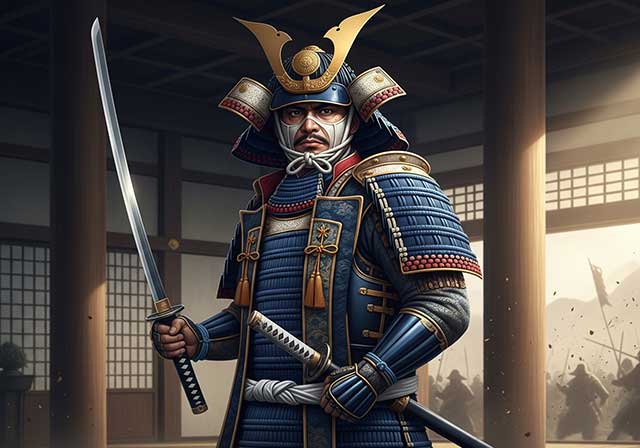
Masakatsu was a member of the Uemura clan and the son of Uemura Masatada; from an early age he served Tokugawa Ieyasu. During the Ikkō-ikki uprising in Mikawa Province in 1563, having converted from the Jōdo Shinshū Buddhist sect to the Jōdoshū sect, he took part in suppressing the rebels. After these events, Masakatsu was appointed a military governor and was granted land holdings. According to a number of sources, he was one of the so-called “Three Governors of Mikawa” (Mikawa sanbugyō), together with Amano Yasukage (1537–1613) and Koriki Kiyonaga (1530–1608).
-
Tomoe Gozen

Gozen is regarded as one of the few historically documented examples of true female warriors of feudal Japan, known as onna-musha or onna-bugeisha. Although Japanese history records countless women who at various times were forced to take up arms—for example, in defense of their castles—Tomoe Gozen was, without any doubt, a genuinely skilled and accomplished fighter. She was the wife of Kiso (Minamoto) Yoshinaka, although The Tale of the Heike describes her more as a female vassal. Yoshinaka rose in rebellion against the Taira clan and, in 1184, captured Kyoto after his victory at the Battle of Kurikawa. After the Taira were driven into the western provinces, Yoshinaka began insistently asserting that he alone was worthy of assuming leadership of the Minamoto clan and taking on the mantle of its head.
-
Tachibana Muneshige

Tachibana Muneshige was born the eldest son of Takahashi Shigetane, one of the principal retainers of the Ōtomo clan and commander of Iwaya Castle. In childhood, he bore the name Senkumamaru. His early years coincided with a period of intense military confrontation between the Ōtomo clan and other powerful warrior houses of Kyūshū—namely the Shimazu, Akizuki, and Ryūzōji clans.
-
Tachibana Dosetsu
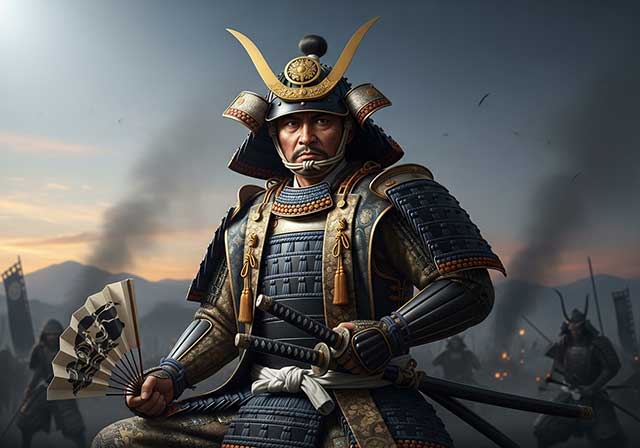
Tachibana Dōsetsu is the name by which Hetsugi Akitsura is more widely known; the name of this lineage is also found read as Hekki or Bekki. For a long period, Akitsura served the Ōtomo clan, the daimyō of Bungo Province, and took part in wars against the Ōuchi family, the principal enemies of the Ōtomo in northwestern Kyushu. In the 1560s, Akitsura seized the castle of the Tachibana clan, which had rebelled against the Ōtomo, and thereafter adopted the surname Tachibana. Around the same time, he took Buddhist vows and assumed the name Dōsetsu, which means “Snowy Road.”
-
Taira no Masakado

Taira no Masakado embodied the quintessential samurai of his era—self-assured, harsh, and unyielding. In his youth, he served in the palace guard and repeatedly proved his bravery while suppressing unrest. Thanks to these achievements, Masakado sought the post of chief of the capital’s military-police office (the kebiishi-chō), but he was rejected: by that time, nearly all court positions—now little more than privileged sinecures—were controlled by members of the powerful Fujiwara clan.
-
Sakakibara Yasumasa
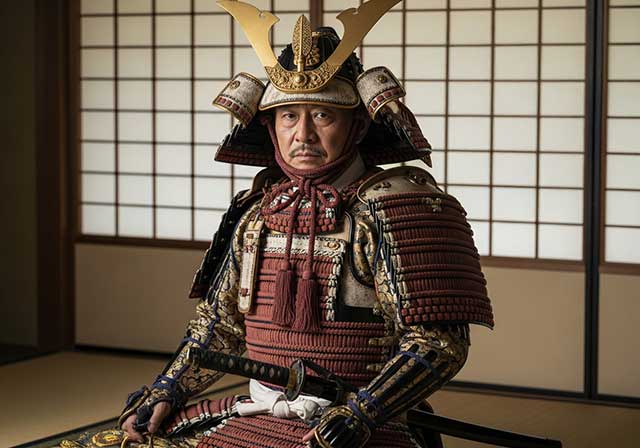
Yasumasa was the second son of Sakakibara Nagamasa and was born in Ueno in Mikawa Province. From a young age, he began serving Tokugawa Ieyasu and eventually rose to the position of one of his most trusted generals. His wife was the daughter of Osuga Yasutaka. Ieyasu first noticed the young Yasumasa during the suppression of the Ikkō-ikki uprising in Mikawa in 1564. Thanks to his demonstrated abilities, Yasumasa was granted the privilege of using the character “yasu”—the second character of Ieyasu’s own name—in his own. Although he was the second child in his family, he became his father’s heir, though the exact reasons for this remain unknown.
-
Sakai Tadatsugu
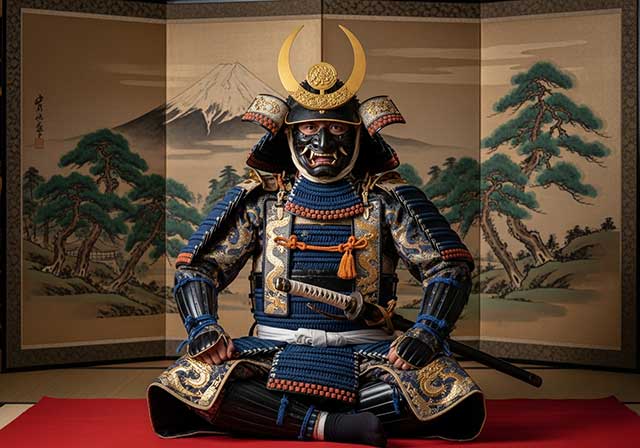
Tadatsugu was one of the most renowned generals serving Tokugawa Ieyasu. After Ieyasu broke ties with the Imagawa clan, Tadatsugu—an ardent supporter of this decision—was granted command of Yoshida Castle in 1565, which controlled the coastal road from Tōtomi to Mikawa. During the Battle of Mikatagahara in 1573, he held the right flank of the Tokugawa forces even when the troops sent by Oda fled under the assault of the Takeda army. In the Battle of Nagashino in 1575, he personally requested permission to carry out a night attack on the Takeda camp, which he executed brilliantly together with Kanamori Nagachika.
-
Ryuzoji Takanobu
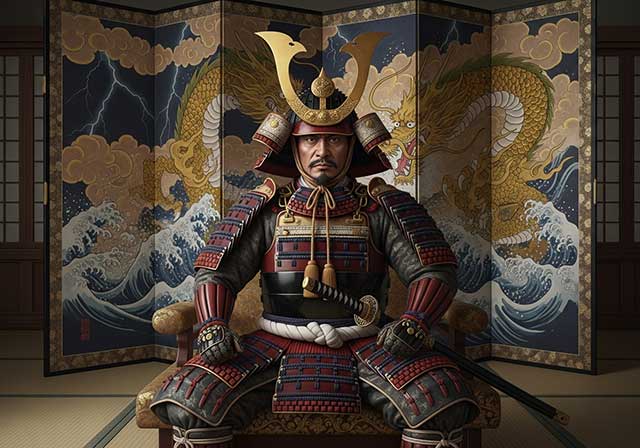
Takanobu was the eldest son of Ryūzōji Takaie and the great-grandson of Ryūzōji Iekane. His father was killed by a man named Baba Yoritiku in 1544. At a young age, Takanobu took Buddhist vows and received the monastic name Engetsu. However, around the age of eighteen, he returned to secular life, and in 1548, after the death of Ryūzōji Tanehide, he became the head of both branches of the Ryūzōji family.

